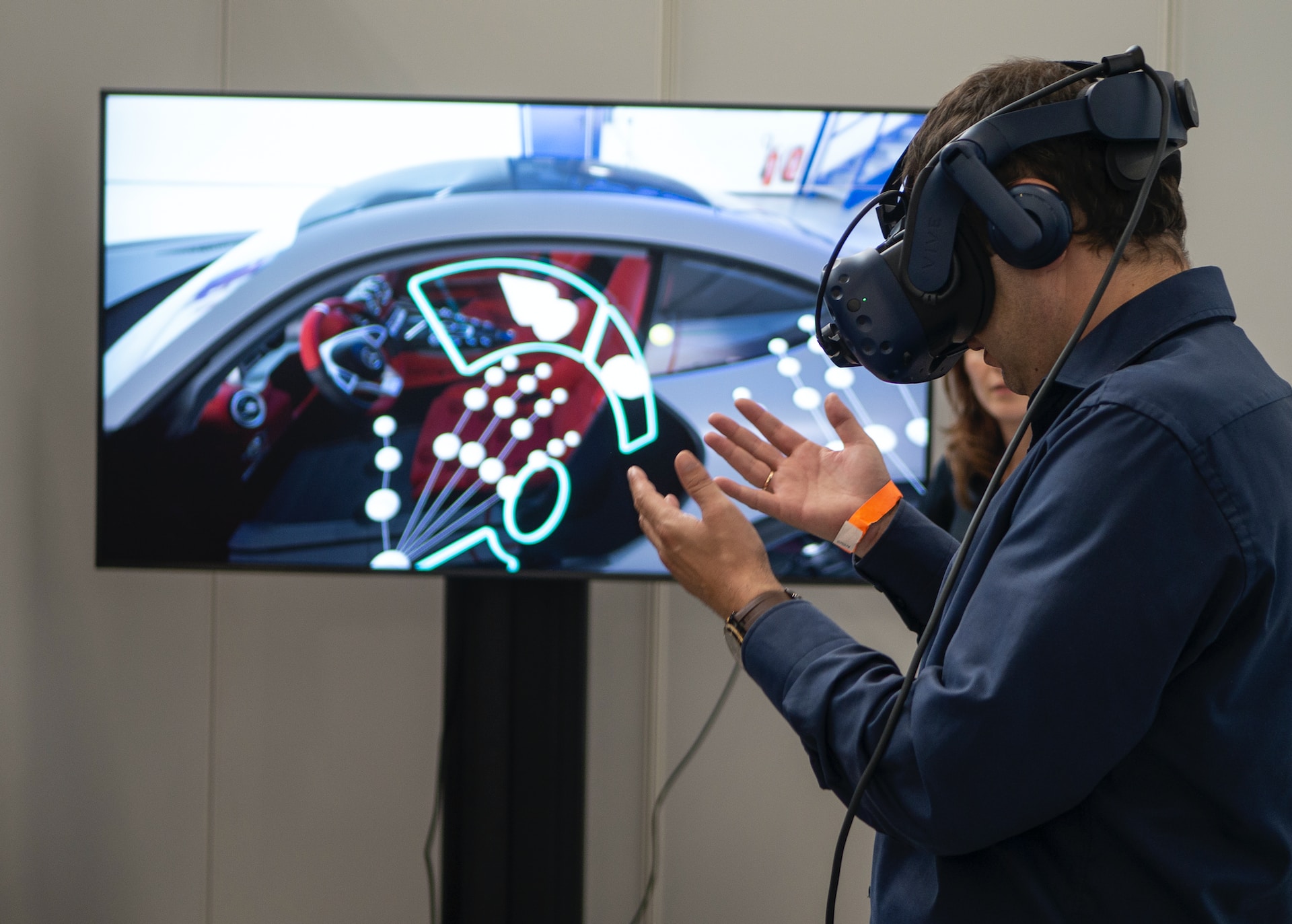Haptic technology is the use of tactile sensations to stimulate the sense of touch in a user experience. For example, direct applications of haptic solutions frequently include phone and game controller vibrations. Haptic science also involves any tactile feedback such as air pressure or sound waves.
Haptic technology has been around since the 1960s and saw its first large-scale uses in 1980s arcade games. Since then, it has evolved to provide richer and more complex interfaces and experiences to the users of various devices. Its purpose is to connect virtual, onscreen experiences to the physical world and make digital interfaces more natural and lifelike.
How Haptic Technology Works
Haptic technology works by combining something that happens in software with a corresponding physical experience. Those physical experiences are generated by many different technologies, including instruments that create vibration, force feedback “rumble packs”, air gusts, and even ultrasound beams that you can’t hear but can feel.
To make this easier to understand, let’s look at a specific example. The iPhone has a built-in Taptic Engine, Apple’s custom haptic feedback system. When you do something in software that’s tied to a haptic experience, such as long-pressing the screen or pressing the Home button, the software triggers a specific vibration pattern in the Taptic Engine that makes the phone seem to respond to your touch physically.
Another excellent example of haptic feedback is in a driving video game. If you’re in the arcade or your console controller has haptics, when you drive off the smooth road, the game software triggers the force feedback engine in your controller to shake and vibrate, simulating a rough off-road driving experience.
Examples of Haptic Alerts and Touches
These devices have some common kinds of haptic feedback:
- Apple screens and mice: Apple has used haptic feedback in its 3D Touch screen technology since the iPhone 6S and its Home buttons since the iPhone 7. It also uses haptics in its Magic Mouse and Magic Trackpad.
- Apple Watch notifications and scrolling: The Apple Watch uses haptics to create the little “clicks” felt when scrolling using the Digital Crown.
- Android phones and tablets: Android devices use haptics to provide feedback for various actions, such as typing on the keyboard, tapping icons, or unlocking the screen.
- Video game controllers: Most modern game controllers have haptics to enhance the gaming experience, such as the PlayStation DualSense, the Xbox Adaptive Controller, and the Nintendo Switch Joy-Con.
- Medical equipment: Haptics are used in medical equipment to provide feedback to doctors or surgeons, such as in robotic surgery, ultrasound imaging, or virtual reality training.
Benefits and Challenges of Haptic Technology
Haptic technology has many benefits, such as:
- Improving user engagement and satisfaction: Haptics can make the user experience more immersive, interactive, and enjoyable, as well as increase the sense of presence and realism.
- Enhancing accessibility and usability: Haptics can help users with visual, auditory, or cognitive impairments to access and use digital devices, as well as provide alternative ways of communication and expression.
- Increasing learning and performance: Haptics can facilitate learning and skill acquisition, as well as improve feedback and guidance, especially in domains that require physical manipulation or coordination, such as education, sports, or music.
However, haptic technology also faces some challenges, such as:
- Developing high-quality and cost-effective haptic devices: Haptics require sophisticated hardware and software components, which can be expensive, bulky, or power-consuming, as well as difficult to integrate with existing devices or platforms.
- Designing effective and intuitive haptic interfaces: Haptics need to be carefully designed to match the user’s expectations, preferences, and needs, as well as the context and content of the application, to avoid confusion, annoyance, or distraction.
- Evaluating and measuring the impact of haptics: Haptics are subjective and complex phenomena, which can be influenced by many factors, such as the user’s mood, personality, or culture, as well as the environment, task, or goal, making it challenging to assess their effects and outcomes.
The Future of Haptic Technology
Haptic technology is constantly evolving and expanding, as innovations and applications emerge in various fields and domains. Some of the current trends and future directions of haptic technology are:
- Haptic gloves and suits: These are wearable devices that can provide full-body haptic feedback, such as the TeslaSuit, the HaptX Gloves, or the VRgluv. These devices can enable more immersive and realistic virtual reality experiences, as well as new forms of entertainment, education, or training.
- Haptic holograms and displays: These are devices that can create haptic sensations in mid-air, without requiring any physical contact, such as the Ultrahaptics, the HaptoMime, or the HoloLens. These devices can enable more natural and intuitive interactions with virtual objects, as well as new possibilities for augmented reality or mixed reality applications.
- Haptic communication and social interaction: These are devices that can transmit haptic signals over a distance, such as the Kissenger, the Hug Shirt, or the Flex-N-Feel. These devices can enable more expressive and emotional communication and social interaction, especially for people who are separated by physical or geographical barriers.
Conclusion
Haptic technology is a fascinating and promising field that can enhance the user experience and interaction with digital devices and applications. Haptic technology can provide various benefits, such as improving engagement, satisfaction, accessibility, usability, learning, and performance, but also faces some challenges, such as developing high-quality and cost-effective devices, designing effective and intuitive interfaces, and evaluating and measuring the impact of haptics. Haptic technology is constantly evolving and expanding, as innovations and applications emerge in various fields and domains, such as haptic gloves and suits, haptic holograms and displays, and haptic communication and social interaction. Haptic technology is the future of touch, and it is here to stay.








